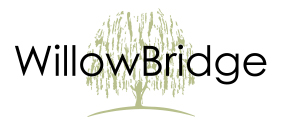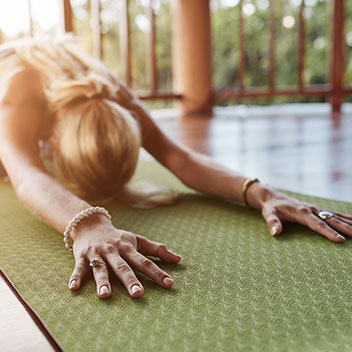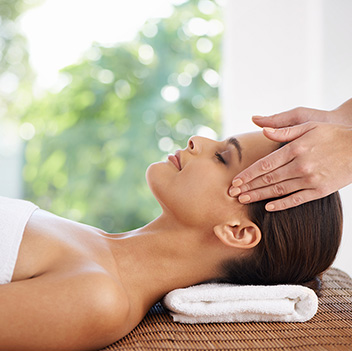Acupuncture
Styles of Acupuncture
WHAT ARE THE DIFFERENT STYLES OF ACUPUNCTURE?
While it originated in China, acupuncture is used throughout the world. Different styles have developed over the centuries based on different theories. We would encourage you to speak with your practitioner about his/her style. While the basic theoretical principles of acupuncture are fairly consistent, styles of acupuncture differ greatly in terms of technique and diagnosis. There is no evidence that one particular style is more effective than another, but you should understand as much as possible about the treatment being proposed. Below is a general guide:
Traditional Chinese Acupuncture: Traditional Chinese Acupuncture, part of Traditional Chinese Medicine (TCM), is the dominant style of acupuncture studied and practiced in the U.S.
Community Acupuncture: Community Acupuncture takes place a quiet group setting, with each person seated in a reclining chair. By treating many people at one time, costs can remain low, friends and family can be treated at the same time and, most importantly, more people in the community can benefit from the therapeutic effects of acupuncture.
Japanese Acupuncture: “Japanese-style” acupuncture uses the same meridians and points as Chinese acupuncture but takes a more subtle route, typically using fewer and thinner needles with less stimulation.
Korean Hand Acupuncture: This technique focuses on points in the hand that correspond to areas of the body and to certain disharmonies.
Auricular Acupuncture: This system, commonly used for pain control and drug, alcohol, and nicotine addiction, focuses on points in the ear that correspond to areas of the body and to certain disharmonies.
Medical Acupuncture: When acupuncture is performed by a western Medical Doctor (MD), it is termed “Medical Acupuncture.” Acupuncture requirements for western doctors are generally more lenient than for non-MDs. If you decide to go to an MD for acupuncture, choose one who is a member of the American Academy of Medical Acupuncture, as this organization requires a minimum of 200 hours of training. Medical doctors usually use sterilized, stainless steel needles, like other acupuncturists, but also sometimes use injections.
Balance Method Acupuncture: One of the oldest systems of Acupuncture, over 2,500 years old. This system was brought to the United States by Dr. Richard Tan and uses the balancing of meridians to create shifts in pain syndromes.
Our Acupuncturists are trained in TCM, Auricular and Balance Methods.
Commonly Treated Conditions
WHAT KINDS OF AILMENTS IS ACUPUNCTURE USED TO TREAT?
Acupuncture is recognized by the National Institutes of Health (NIH) and the World Health Organization (WHO) to be effective in the treatment of a wide variety of medical problems. The following are some of the more common conditions treatable by Chinese Medicine and Acupuncture, as outlined by the WHO.
- Upper Respiratory Tract: Acute sinusitis, acute rhinitis, common cold, acute tonsillitis
- Respiratory System: Acute bronchitis, bronchial asthma (most effective in children and in patients without complicating diseases)
- Disorders of the Eye: Acute conjunctivitis, central retinitis, myopia (in children), cataract (without complications)
- Disorders of the Mouth: Toothache, post-extraction pain, gingivitis, acute and chronic pharyngitis
- Gastrointestinal Disorders: Spasms of esophagus and cardia, hiccough, gastroptosis, acute and chronic gastritis, gastric hyperacidity, chronic duodenal ulcer (pain relief), acute duodenal ulcer (without complications), acute and chronic colitis, acute bacillary dysentery, constipation, diarrhea, paralytic ileus
- Neurological and Musculoskeletal Disorders: Headache and migraine, trigeminal neuralgia, facial palsy (early stage, i.e. within three to six months), pareses following a stroke, peripheral neuropathies, sequelae of poliomyelitis (early stage, i.e., within six months), Meniere’s disease, neurogenic bladder dysfunction, nocturnal enuresis, intercostal neuralgia, cervicobrachial syndrome, “frozen shoulder,” “tennis elbow,” sciatica, low back pain, osteoarthritis
IS ACUPUNCTURE USED TO TREAT ANY OTHER KINDS OF AILMENTS?
The most common ailments presented to acupuncturists in the U.S. are pain-related conditions. However, as the public becomes more educated about acupuncture and Oriental medicine, people are seeking help for a number of other conditions, with good results. These include:
- Eye, Ear, Nose & Throat Disorders: Sinusitis, sore throat, hay fever, earache, nerve deafness, ringing in the ears, dizziness, poor eyesight
- Circulatory Disorders: High blood pressure, angina pectoris, arteriosclerosis, anemia
- Gastrointestinal Disorders: Irritable bowel syndrome (IBS), spastic colon, colitis, constipation, diarrhea, food allergies, ulcers, gastritis, abdominal bloating, hemorrhoids
- Gynecological and Genitourinary Disorders: Premenstrual syndrome (PMS); irregular, heavy or painful menstruation; endometriosis; menopause; fibroids; chronic bladder infection; complications in pregnancy; morning sickness; kidney stones; impotence; infertility (men and women); sexual dysfunction
- Immune Disorders: Candida, chronic fatigue, HIV and AIDS, Epstein Barr virus, allergies, lupus, multiple sclerosis (MS), hepatitis
- Addictions: Smoking, drugs, alcohol, food
- Emotional and Psychological Disorders: Anxiety, insomnia, depression, stress
- Musculoskeletal and Neurological Disorders: Arthritis, neuralgia, sciatica, back pain, bursitis, tendonitis, stiff neck, Bell’s palsy, trigeminal neuralgia, headaches and migraines, stroke, cerebral palsy, polio, sprains, muscle spasms, shingles
- Respiratory Disorders: Asthma, emphysema, bronchitis, colds and flu
- Miscellaneous: Chemotherapy/radiation side effects, diabetes, dermatological disorders, weight control
How Acupuncture Works
HOW DOES ACUPUNCTURE WORK?
Acupuncture achieves the desired results by stimulating specific points near or on the surface of the skin – acupuncture points – that have the ability to alter biochemical and physiological conditions in the body. Because acupuncture points are designated areas of electrical sensitivity, inserting needles at these points stimulates sensory receptors. This in turn stimulates nerves that transmit impulses to the hypothalamic-pituitary system in the brain. The hypothalamus-pituitary glands are responsible for releasing neurotransmitters and endorphins, the body’s natural pain-killing hormones (thought to be some 200 times more potent than morphine). Endorphins play a significant role in the hormonal system, which is why acupuncture is effective in treating back pain, arthritis, PMS and infertility. The substances released as a result of acupuncture relax the body, and also regulate serotonin in the brain, which affects emotional states. Other physiological effects include increased circulation, decreased inflammation, relief of muscle spasms and increased T-cell count, which supports the immune system.
Western science posits that acupuncture triggers three primary mechanisms in the body:
- Activation of opioid systems: Research has found that several types of pain-reducing opioids may be released into the central nervous system during acupuncture.
- Changes in brain chemistry: Studies have shown that acupuncture may alter brain chemistry by altering the way in which neurotransmitters and neurohormones are released. Acupuncture has also been documented to affect sensation and involuntary body functions, such as immune reactions and processes involved in regulating blood pressure, blood flow and body temperature. Modulation of subcortical structures of the brain may be an important mechanism by which acupuncture exerts its complex multisystem effects.
- Changes in blood flow: Acupuncture and Oriental medicine affects the circulation of blood to the affected area, which helps to remove pain-causing chemicals and restore normal function.
ARE THERE RISKS OR SIDE EFFECTS TO ACUPUNCTURE?
The acupuncture needle is a fine, disposable (one-time use), sterile, FDA-approved medical device. While acupuncture is a highly safe form of physical medicine, there are a few risks. These include bruising, fainting, muscle spasms, bleeding, nerve damage (extremely rare) and punctured organs (extremely rare).
HOW DEEP DO THE NEEDLES GO?
Acupuncture points are located on or close to the skin’s surface, but needles can be inserted from 1/16 to a few inches deep. The depth of insertion depends on the nature of the location and condition being addressed, the patients’ size, age, and constitution, as well as the acupuncturist’s style and training.
DO ACUPUNCTURE NEEDLES HURT?
There is little sensitivity to the insertion of acupuncture needles. One reason is that they are much finer than those used for injections and blood tests – 25 to 50 times thinner than hypodermic needles. Further, the actual insertion is done very quickly. While some feel nothing at all, others experience a brief moment of discomfort, sometimes followed by a mild sensation of cramping, tingling or numbness (desirable sensations known as “attaining qi”). The needles are left in place for 20 to 90 minutes. Most people find the experience relaxing, and some even fall asleep during sessions.
Choosing an Acupuncturist
HOW DO I CHOOSE AN ACUPUNCTURIST?
Your results with acupuncture will depend to a great extent on the provider you choose. We recommend finding an acupuncturist with whom you feel comfortable. If you like and trust your practitioner, your experience will be more positive. It’s also important to know about the acupuncturist’s training and experience, and what to expect from the treatment. The clearer you are about who is treating you, and exactly what the treatment involves, the more you will be able to relax during the acupuncture session and benefit it. Following are some guidelines:
Determine your goals: Do you have a specific injury or complaint, or do you want to try acupuncture to balance body, mind and spirit? Are you looking for a primary health care practitioner, or someone to work in conjunction with your current physician?
Questions to ask: Where was he/she trained? How long was the training? How long has he/she been in practice? How many total patient contacts has he/she had? What experience does he/she have with your specific ailment?
WHAT CREDENTIALS SHOULD I LOOK FOR?
Acupuncture is a respected field of medicine, and most states, provinces and countries require formal training and certification. In particular the U.S. has rigorous training standards for acupuncturists. Most states require a 4-year Master’s degree in Acupuncture (MSAC) or Traditional Oriental Medicine (MSTOM) from an accredited acupuncture school. In addition, an acupuncturist must pass written and practical state and/or national board exams in order to become licensed. Training includes all aspects of Western medicine as well as Traditional Oriental Medicine.
Our acupuncturists, Rachel Nudd and Byron Leftwich, are both licensed by the MN Medical Board and are certified by the National Certification Commission for Acupuncture and Oriental Medicine. Its members are required to have a degree in Acupuncture or Oriental Medicine (Acupuncture and Herbal Medicine) from an accredited school, or have worked as an apprentice acupuncturist for at least four years, and passed both written and practical national board exams. Those who have passed the acupuncture portion of the exam are entitled to add “Dipl.Ac.” (Diplomate of Acupuncture) to their names. Practitioners of Traditional Oriental Medicine have passed the exams required for the Dipl.Ac. and the Herbal Medicine exam.
There is also an advanced doctoral degree available: the Doctor of Acupuncture and Oriental Medicine (D.A.O.M.). The highest degree available in the U.S., it requires an additional two and a half years of schooling beyond the 4-year Master’s degree. Research studies, a dissertation, advanced clinical training, and advanced classes are also requirements.
WHAT ARE SOME OTHER CHINESE MEDICINE TECHNIQUES BESIDES ACUPUNCTURE?
There are a variety of techniques used in Traditional Chinese Medicine (TCM). Below are a few that are typically used in conjunction with acupuncture to enhance its effects:
- Electro-Acupuncture: Acupuncture needles are used to conduct small electrical currents. This technique, often used in conjunction with acupuncture, has been proven to decrease pain, accelerate healing, and significantly reduce inflammation, edema and swelling.
- Moxibustion: A technique in which a Chinese herb called mugwort or Artemisia Vulgaris is used to heat an acupuncture point, particularly in the treatment of certain debilitating conditions as well as arthritis and pain. Moxa is usually rolled into a stick, lit, and held over specific areas of the body. It can also be placed onto the handle of an acupuncture needle for deeper penetration of heat.
- Cupping: In cupping, a glass or plastic cup is suctioned onto the body and kept in place for about 10 minutes. This stimulates circulation, relieves swelling, and enhances the acupuncture or electro-acupuncture.
- Gua Sha: Also known as “spooning” or “coining” to English speakers and “tribo-effleurage” to the French and Kerokan to the Japanese, Gua Sha literally means “scrape away heat”. It is performed by applying pressurized strokes to the back using a specialized scraping instrument. Gua Sha is used for many ailments from muscle aches to fevers to digestive and gynecological issues.
- Tui Na: A form of Chinese body work used in conjunction with acupuncture for a variety of musculoskeletal and organ-related issues.
- Passive Stretching: A technique used to lengthen and stretch muscles in movement planes that are difficult for the patient to stretch themselves. Patients are advised to relax muscles and allow the practitioner to stretch/pull muscles without the patient’s assistance. This technique is particularly helpful for relief of frozen shoulder, lower back stiffness, hip stiffness sciatica and other stiff or compromised joints.
Treatment Sessions and Costs
What to Expect
WHAT WILL HAPPEN ON MY FIRST VISIT?
For your initial consultation, the acupuncturist needs to assess your general health. You will be asked about your current symptoms and any treatment you’ve received so far. It is also important to gather detailed information about your medical history and that of your family, your diet, digestive system, sleeping patterns and emotional state. The purpose is to identify what needs to be addressed in order to target your specific complaint, and to boost your overall vitality.
Stimulation of specific areas affects the functioning of various organs. However, those areas may not be close to the part of the body where you are experiencing a problem. For example, if you suffer from headaches, needles may be inserted into your foot or hand. There are 365 specific acupuncture points on the body, and an unlimited number of non-specific points. An experienced acupuncturist will use a selection of these for each session. Often during the course of a few sessions, different points will be selected as the patient’s condition changes. Other techniques, such as electro-acupuncture, massage, or tapping with a rounded probe, are particularly suitable for small children or for people with a fear of needles.
WHAT SHOULD I DO BEFORE TREATMENT?
We recommend wearing loose, comfortable clothing to receive acupuncture treatment. You should be aware that the acupuncturist may need to access points on your torso, arms and legs. It also helps to be in a calm state. Try to arrive 5 or 10 minutes before your appointment to give yourself a chance to relax. Try to avoid the following:
- Eating a big meal within one hour of your appointment
- Fasting for more than six hours before your appointment
- Alcohol, tobacco, food or drinks that color your tongue (such as coffee) immediately prior to treatment or just following a treatment
- Vigorous exercise or sexual activity within the hour before treatment
We also recommend that you avoid wearing any metallic jewelry, watches, or earrings. Makeup and nail polish should be minimized or eliminated. Please also avoid the use of perfumes, colognes or strongly scented cosmetics.
HOW MANY SESSIONS WILL I NEED?
Length, number and frequency of sessions vary. For most conditions, a series of several sessions is necessary to achieve the maximum benefit. After an initial consultation, the acupuncturist should provide you with a treatment plan that includes the techniques to be used, as well as the frequency and duration of treatment.
A typical series of sessions consists of 6 to 12 visits, once or twice a week, with sessions lasting 30 to 90 minutes each. Acute conditions, such as sprains, generally require less time and frequency, whereas more chronic or severe ailments may require several (or several dozen) sessions. Appointments are scheduled further and further apart after the optimal response has been achieved. Some people experience great benefits from weekly or monthly sessions.
HOW LONG DO APPOINTMENTS LAST?
The length of acupuncture sessions varies depending on your condition. Typically, your first visit will be longer than your subsequent visits. Sessions can be as short as 30 minutes to as long as two hours.
HOW WILL I FEEL AFTER ACUPUNCTURE?
Patients normally feel relaxed and calm. You may feel tired or drowsy for a few hours if the experience is particularly strong. You may also experience a short-term flair-up of symptoms in the healing process. After a session, it is a good idea to sit quietly and relax. A gentle walk or very mild exercise can also be helpful. Avoid big meals, vigorous exercise, alcohol and stressful situations.
Cost & Payments
HOW MUCH DOES ACUPUNCTURE COST?
Each patient has unique concerns. The cost of treatment depends on the types of therapy needed and the length of therapy needed. Our staff will be happy to answer your questions and to help you in any way we can.
- Initial Appointment $115+
- Follow-Up Appointment $70+
- Community Acupuncture $35
We do not accept insurance for Community Acupuncture appointments, we are happy to give you a copy of your receipt for you to submit on your own.
DO YOU ACCEPT INSURANCE?
At this time we accept:
- Health Partners
- Work Comp
- Auto Injury
- Flex/HAS
- Medica
If you are a Veteran and are interested in trying Acupuncture, you can request WillowBridge from your VA provider. We treat Veterans from all over the northern part of the state through Care in the Community.
You should call the phone number on the back of your insurance card. We recommend asking your insurance company the following questions before contacting our office:
- Is acupuncture covered by my plan?
- Is a referral required from my Primary Care Provider (PCP)?
- Is reimbursement limited to a particular network or panel of providers?
- Is reimbursement limited only to Medical Doctors (MD) who perform acupuncture and not applicable to licensed acupuncturists?
- Is pre-authorization required?
- Am I limited to specific diagnosis codes (only specific sessions)? If so, what are they?
- Is there an annual deductible? If so, how much is the deductible? How much has been met?
- If I am covered for acupuncture, then may I receive written proof/authorization?
- Is there a maximum yearly allowance for acupuncture? Maximum number of visits? Specific dollar amount? What percentage is covered?





